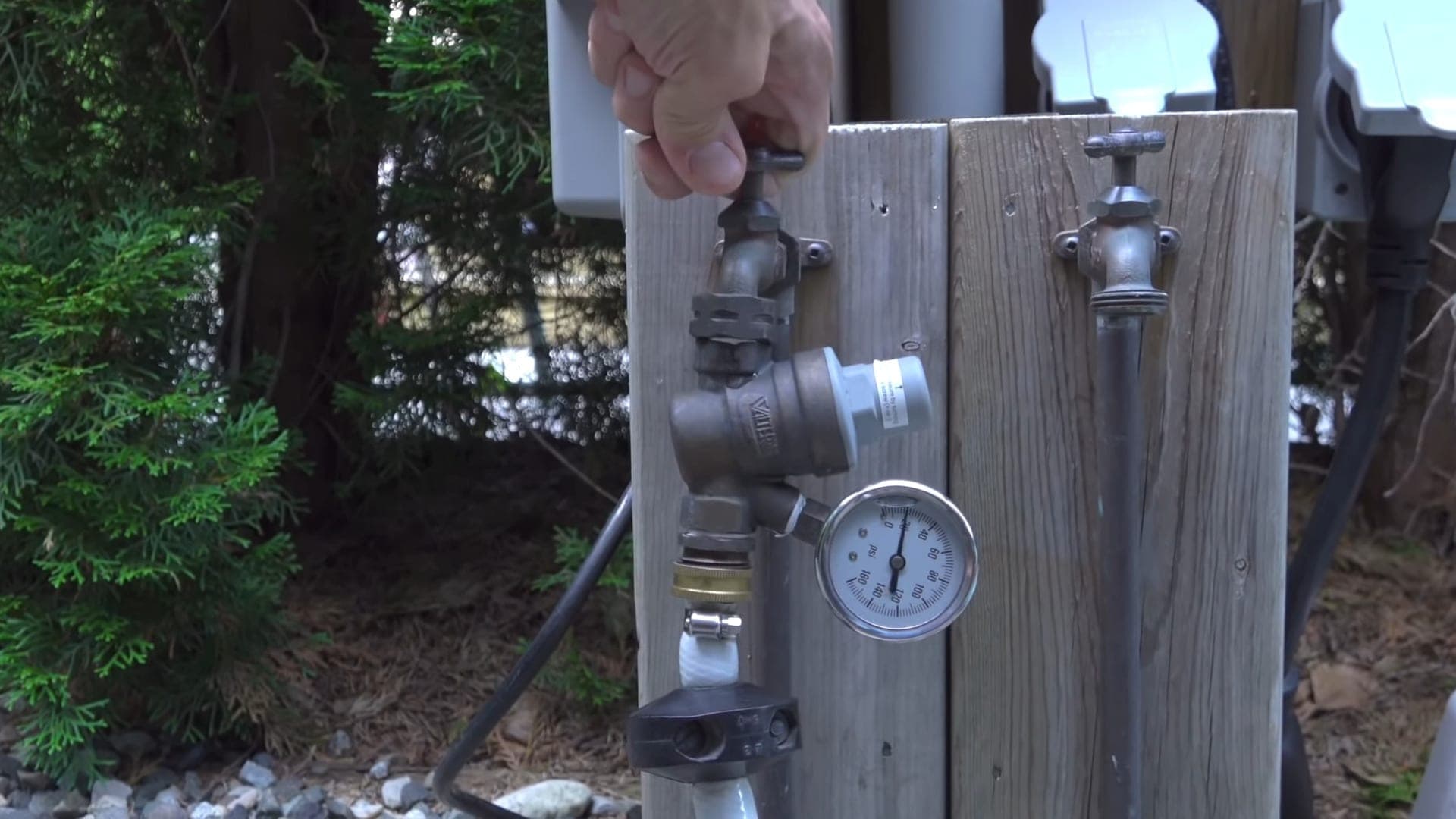How do you really feel with regards to Low Water Pressure in the House??

Low tide stress in your house can be an irritating problem, influencing whatever from showering to cleaning dishes. If you're experiencing weak water circulation, there are a number of possible reasons and solutions to check out. In this guide, we'll go over typical factors for low tide pressure and sensible actions to resolve the concern properly.
Intro to Low Tide Stress
Low tide stress happens when the circulation of water from your taps, showers, and other components is weak than common. This can make everyday jobs more challenging and less effective. Recognizing the sources of low tide pressure is essential to finding the right service.
Usual Causes of Low Water Stress
Faulty Stress Regulatory Authorities
Stress regulators are responsible for maintaining constant water pressure in your home. If they malfunction, it can lead to low tide stress or irregular flow throughout your house.
Local Supply Of Water Issues
Sometimes, the trouble lies outside your home. Local water supply issues, such as main line leakages or upkeep job, can temporarily decrease water stress in your area.
Pipeline Obstructions
Over time, pipelines can become clogged with natural resource, sediment, or debris, limiting the flow of water. This is a typical issue in older homes with galvanized steel pipelines.
Corrosion
Deterioration within pipelines can bring about leaks and reduced water pressure. Corrosion buildup can constrict water flow, especially in maturing plumbing systems.
Just How to Detect Low Tide Pressure
Inspecting Pipelines
Examine visible pipelines for indicators of leaks, rust, or clogs. Take note of any type of unusual noises, such as banging or rattling pipes, which might indicate issues within the plumbing system.
Consulting with a Plumber
If you're incapable to pinpoint the root cause of low water pressure, think about employing a professional plumber to perform a detailed examination. They can recognize underlying issues and recommend appropriate remedies.
Inspecting Faucets and Fixtures
Beginning by evaluating the water pressure at different taps and fixtures throughout your home. If the issue is isolated to certain areas, it might show localized problems.
DIY Solutions to Fix Low Tide Pressure
Flushing Water Heater
Sediment buildup in the hot water heater can limit circulation and decrease performance. Flushing the tank periodically helps eliminate sediment and preserve ideal efficiency.
Inspecting Pressure Regulator
Ensure that the pressure regulatory authority is functioning appropriately. Changing or replacing the regulator can help restore correct water pressure throughout your home.
Cleaning Up Aerators and Showerheads
Natural resources can build up in aerators and showerheads, decreasing water circulation. Eliminate and clean these components frequently to improve water stress.
Clearing Up Clogs in Pipeline
For minor obstructions, attempt using a plumbing snake or chemical drain cleaner to clear blockages in pipelines. Be cautious when making use of chemicals and follow safety and security guidelines.
When to Call an Expert Plumber
If DIY efforts stop working to deal with the issue or if you suspect significant plumbing troubles, it's finest to seek help from a licensed plumber. They have the knowledge and tools to resolve complex problems securely and efficiently.
Safety Nets to Preserve Water Stress
Setting Up a Stress Booster
Consider installing a pressure booster pump to boost water stress in areas with consistently reduced circulation. This can be especially valuable for multi-story homes or residential or commercial properties with high-demand fixtures.
Tracking Water Use
Bear in mind water usage habits and prevent ill-using the plumbing system. Basic changes, such as incredible showers and washing loads, can aid maintain adequate water stress.
Normal Maintenance
Set up routine upkeep for your plumbing system to prevent issues such as rust, leakages, and blockages. Resolving small issues early can help stay clear of more considerable repairs later.
Verdict
Dealing with low water stress can be aggravating, yet determining the underlying causes and applying ideal remedies can restore optimal flow throughout your home. Whether it's cleaning up aerators, checking pipelines, or talking to a plumber, taking aggressive steps can ensure a steady supply of water for your day-to-day needs.
9 Solutions to Low Water Pressure
If you have ever struggled to rinse the shampoo out of your hair, washed your hands under a trickle of water, or been forced to wait for your washing machine to complete a cycle, then you have experienced the nuisance of low water pressure. Low water pressure can turn a simple task into a hassle, but once you identify the cause, either the necessary plumbing fix or a water booster pump can drastically improve your water pressure. In this article, you can learn about nine common causes of low water pressure and how to resolve low water pressure in your home.
How do you know if you have low water pressure?
Testing your home’s water with a pressure gauge is the easiest way to find out if you have low water pressure. Pressure gauges are simple and inexpensive, and once installed, will allow you to check your water pressure with a quick glance.
If your water is from a municipal water supply, select an outdoor faucet near where the main water line enters your home. If your water is from a well, select a faucet that is close to the well’s pressure tank. Attach the pressure gauge to the faucet and tighten it. To get an accurate reading, make sure water isn’t being used anywhere else inside or outside the house, and then fully turn the faucet on. Once the faucet is on, you can read the water pressure on the gauge’s dial. Typical home water pressure should be between 40 and 50 psi, so if the dial reads less than 40 psi, you have low water pressure.
Do water booster pumps increase water pressure?
A water booster pump is a centrifugal pump that improves low water pressure and increases water flow. Much like how a fan’s blades create a gust of air, a water booster pump’s rotating impeller draws water in and then pushes it out with increased force. This force raises the water pressure in a system. A water booster pump is installed where the main water line enters your home, so water pressure is improved in every tap and appliance.
What causes low water pressure?
1. Hard water
If you have hard water, scale can accumulate in your pipes, restrict the water flow, and reduce your water pressure. Hard water has a high mineral content, specifically calcium and magnesium, and scale is formed when these mineral salts dissolve.
The solution: When scale buildup is severe enough to restrict water flow and reduce water pressure, the best solution is to replace your pipes. Products like CLR Calcium, Lime, and Rust remover can diminish scale, but as the scale comes off it may clog your pipes, creating another costly plumbing problem. Not to mention, it is never a good idea to put harsh chemicals in the pipes that supply your drinking water. To prevent scale in the future, we recommend installing a water softener.
The main water shut off valve is not open.
If your water pressure has suddenly decreased and you recently had a repair done, make sure the main water shut off valve is fully open. Most plumbing repairs require the water to be shut off, but if the valve is not completely opened afterward, your water pressure will be restricted.
The solution: Locate your main shut off valve, which is installed where the main water line enters your home, and fully open it by turning it counterclockwise.
A municipal water problem
Low water pressure may not have to do with your own plumbing system. Just like your home’s water supply, the municipal water supply is subject to problems that can cause low water pressure, such as leaks and corrosion.
The solution: Call the municipal water supply to report your low water pressure. Your input may alert them to the problem and will ensure your water pressure is restored as quickly as possible.
Faulty pressure regulator
A pressure regulator is a valve that reduces incoming water pressure as water flows into your home from the main service line. High water pressure can damage pipes and plumbing fixtures, so a pressure regulator is installed to protect your home plumbing system. Most are set to 50 pounds per square inch (psi), but if yours is set lower, your water pressure will feel low. If your pressure regulator is set to 50 psi but your pressure still feels low, it may be broken or clogged.
The solution: Adjust your pressure regulator’s setting to 50 psi if it is currently set lower. If your pressure regulator is faulty, ask a plumber to replace it.
A leak
A leak can reduce water flow and water pressure. To determine if you have a leak, turn all the faucets off inside and outside of your home. About an hour later, check your water meter. If it indicates you are using water, you have a leak.
The solution: Enlist the help of a licensed plumber to locate and repair the leak. Once the repairs are complete, your water pressure should return to normal.
https://www.freshwatersystems.com/blogs/blog/what-causes-low-water-pressure-and-how-to-improve-it

We are very fascinated by and I hope you enjoyed the new blog post. Sharing is nice. Helping others is fun. Thanks so much for your time invested reading it.
Schedule And Pricing